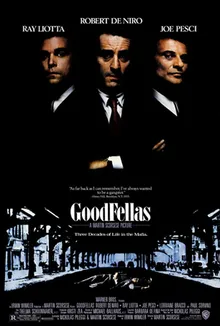Historical accuracy of Goodfellas

Historical accuracy of Goodfellas

Characters
Henry Hill
Based directly on the real Henry Hill, whose life story forms the basis of the film. His rise, crimes, drug dealing, and entry into witness protection are accurately portrayed.
Jimmy Conway
Based on James "Jimmy the Gent" Burke. The film accurately captures his charm, intelligence, paranoia, and role in the Lufthansa heist and subsequent murders. Name changed for legal reasons.
Tommy DeVito
Based on Thomas "Two-Gun Tommy" DeSimone. His notorious temper, violent acts (like the Billy Batts murder), and eventual disappearance/murder are accurately depicted. Name changed.
Paul Cicero (Paulie)
Based on Paul Vario, a Lucchese crime family capo and mentor to the crew. His authority, business dealings (like JFK airport), and disdain for drugs are accurately shown. Name changed.
Karen Hill
Based on Henry's real wife, Karen Friedman Hill. Her perspective, initial attraction, struggles, involvement in drug dealing, and cooperation with authorities are accurately portrayed.
Billy Batts
Based on William "Billy Batts" Bentvena, a real Gambino family soldier. His murder following an insult to Tommy DeSimone is a factual, accurately depicted event.
More characters
Frank Carbone
Based on Angelo Sepe, a real associate involved in the Lufthansa heist who was killed on Burke's orders.
Stacks Edwards
Based on Parnell "Stacks" Edwards, the associate who failed to dispose of the heist truck and was subsequently murdered by Tommy/DeSimone.
Morrie Kessler
Based on Martin Krugman, who provided the tip-off for the Lufthansa heist and was later murdered by Burke's crew for his persistent demands for money.
Frenchy
Based on Robert "Frenchy" McMahon, a real associate involved in hijacking operations with the crew.
Sonny Bunz
Based on Angelo McConnach, the real owner of the Bamboo Lounge, a frequent hangout for the crew.
Anthony Stabile
Based on a real associate involved in Henry Hill's drug operation.
Story
Henry's teenage entry into Vario crew work (1950s)
Accurately portrays Henry Hill being drawn to the local mobsters in East New York, Brooklyn, and starting work for Paul Vario's crew as a youth.
Involvement in truck hijackings around Idlewild/JFK
The crew, particularly Burke's faction under Vario, was heavily involved in cargo theft and hijacking around the airport throughout the 1960s and 70s.
Air France Robbery (1967)
Henry Hill and Tommy DeSimone were key figures in this earlier, significant heist at JFK airport, netting around $420,000.
Copacabana long take scene
While a cinematic device, it accurately reflects the power, access, and VIP treatment mob figures like Henry Hill received in certain establishments due to their connections and money.
Murder of Billy Batts (Gambino made man)
The brutal murder of William Bentvena by Tommy DeSimone (instigated by an insult) and Jimmy Burke, and the subsequent disposal of the body, happened largely as depicted.
Lufthansa Heist planning and execution (Dec 1978)
Accurately depicts the largest cash robbery in US history at the time, masterminded by Jimmy Burke based on inside information, netting nearly $6 million.
Jimmy orders murders of heist participants
Jimmy Burke became paranoid after the heist and systematically had many participants killed (Stacks Edwards, Morrie Kessler, etc.) to prevent them from talking, as shown in the film.
Tommy DeVito's murder ("getting made" setup)
Tommy DeSimone disappeared and was presumed murdered, likely in retaliation for killing Billy Batts without permission. The film's depiction of him being lured to his death is accurate.
Henry's increasing involvement in cocaine trafficking
Despite Paul Vario forbidding drug dealing, Henry Hill built a large cocaine business, leading to his downfall and increased paranoia.
Henry's paranoia and chaotic arrest (1980)
The film accurately portrays the intense pressure, drug use, and constant juggling leading up to Hill's arrest on narcotics charges by federal agents conducting surveillance (the helicopter).
Paulie Cicero abandoning Henry after drug arrest
Paul Vario disowned Henry Hill after his drug arrest, adhering to Mafia rules against drug dealing and cooperation with authorities.
Henry deciding to become an informant / enter WITSEC
Facing prison time and fearing for his life (believing Jimmy Burke would have him killed), Henry Hill agreed to testify against Burke and Vario, entering the Witness Protection Program.
Depiction of prison life for mobsters
The scenes showing relative comfort (cooking special meals, bribing guards) reflect privileges powerful mob figures like Paul Vario could obtain in prison during that era.
Karen Hill's involvement and perspective
The film accurately incorporates Karen's viewpoint, her complicity in Henry's crimes (especially drugs), and her fear, based on her contributions to the book "Wiseguy".
Setting
New York Italian-American mob subculture (Lucchese)
Widely considered one of the most authentic cinematic portrayals of the day-to-day life, social rituals, codes, and atmosphere within a specific Mafia family's circle (Vario crew/Lucchese associates).
Period details across decades (50s, 60s, 70s, 80s)
Meticulously detailed period accuracy in clothing styles, cars, hairstyles, music, and interior design, effectively showing the passage of time and changing trends within the mob world.
Locations (Brooklyn/Queens neighborhoods, bars, clubs)
Realistically portrays the working-class neighborhoods, social clubs, specific bars (Bamboo Lounge), restaurants, and airport environments central to the crew's operations and social life.
Mob lifestyle (money, violence, camaraderie, food)
Accurately captures the blend of flashy wealth, sudden extreme violence, strong bonds within the crew (until betrayal), importance of food/cooking, and family life existing alongside criminality.
Language, dialogue, and narration
The use of specific slang, cadence, profanity, and Henry Hill's confessional narration style are highly authentic, drawn directly from Pileggi's extensive interviews and reporting.
Hierarchy and rules within the mob
Shows the structure (capo Paulie, associates Henry/Jimmy/Tommy), the concept of "made men," and unwritten rules (like the prohibition on members dealing drugs, respect protocols).
Casual integration of crime into everyday life
Effectively portrays how criminal activities like hijacking, loan-sharking, and violence were seamlessly integrated into the characters' seemingly normal family and social lives.
